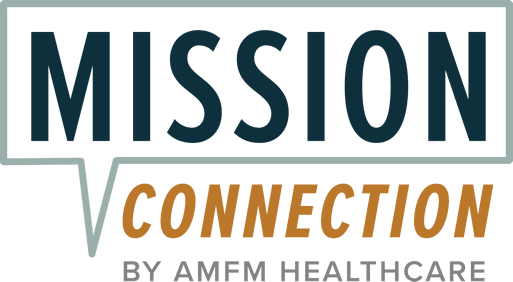Supporting Employees After Mental Health Leave: Creating a Reentry Plan

Are mental health return-to-work plans necessary for a successful transition back into the workplace after taking leave? To put it simply; yes. According to the World Health Organization, mental health return-to-work plans help employees feel supported when they come back to the workforce – and reduce their symptoms.1
Think about it this way: Taking time off to prioritize your mental health can make a place that once seemed so familiar now feel filled with so much uncertainty. Adding this uncertainty to early recovery from mental health issues can make navigating a reentry less than easy.
A successful transition back into the workforce can be an empowering experience and a motivator for productivity. But how can companies transform the challenge of returning to work into a supportive experience?
If you’re an employer who is concerned about helping someone transition back into the workplace, professional mental health advice can be a great source of guidance. This article can also help by explaining:
- What reentry plans after mental leave are
- Whether workplaces need a mental health return to work plan
- Key components of an effective reentry plan
- How to make workplace accommodations to support mental health during return to work
- The role of managers and human resources in return-to-work strategies
- When to seek support in supporting employees after mental health leave

What Is a Reentry Plan After Mental Health Leave?
Mental health return-to-work plans can be thought of as a personalized roadmap that supports employees after taking time off for mental health treatment. For a reentry plan to be as successful as possible, the employee, human resources, managers, and healthcare professionals usually collaborate to ensure a smooth and supportive return to the workplace.
Additionally, a mental health return-to-work strategy is more than a plan to protect well-being – it’s a powerful guide of company values. By prioritizing employee mental health and overall satisfaction, companies can create environments where individuals are shown they’re supported and valued.
Furthermore, organizations that implement a return-to-work plan that focuses on mental health prove that they are in it for the long haul. They demonstrate that they understand the importance of mental health challenges and know that recovery doesn’t happen overnight.
Supporting an employee through a mental health leave – and ensuring their successful reentry into the workplace – isn’t just a once-off effort. Instead, it’s part of a continuous, ongoing process. It requires consistent follow-up, compassion, and a lot of flexibility to help someone adapt to a once well-known workplace as they reintegrate.
Yet, despite this information, some workforces may not have encountered employees taking mental health leave. So, does this mean that only some workplaces need to know how to create a mental health return-to-work plan? We answer this question next.
Do Workplaces Need to Know How to Support Employees After Mental Health Leave?
Most people spend about one-third of their time at work, making it a significant part of life and a big factor in who we are. However, many of us know that mental health is a critical component of our well-being in our day-to-day lives, but we may not recognize how much it impacts our performance in the workplace.
Recent studies show that one in five adults experiences mental health challenges annually, clearly making workplace support more crucial than ever.2 How businesses and organizations deal with employee returns after mental health leave can truly impact their recovery and outcomes for the future. Moreover, a smooth transition can also impact the overall success of the company – making a supportive reentry a win-win for both the employee and employer.
Without a mental health return-to-work plan, the employee may struggle with the transition, potentially leading to a longer recovery and worsening recurrence of mental health issues. Yet, in contrast, companies that factor in mental health support strategies into their management styles typically see lower employee turnover, increased productivity, and a more satisfying workplace culture in general.3
Yet, despite the clear benefits of creating a mental health plan, many companies feel unsure about how to go about doing so. Professional mental health advice can be instrumental in this process, but the following section also considers the key elements of a successful reentry plan.
Steps to Creating a Mental Health Reentry Plan
A well-structured and effective reentry plan can help employees returning from mental health leave feel supported and valued and boost their productivity. There are several key components to a great plan, so the following information takes a deeper dive into these elements.
1. Make a Personal Assessment
The first – and most important – part of a successful reentry plan is considering the employee’s unique situation. What works for one person, might not work for another, so it’s essential to look into each person individually to factor in their needs. For example, what are their mental health symptoms or diagnosis? What areas of work did they struggle with before taking leave? Putting questions such as these at the forefront of your mind means you can take steps to support them in meaningful ways on their return.
2. Collaborate With Healthcare Professionals
Mental health care providers can offer valuable insights into an employee’s readiness to return to work. By factoring in professional opinions, employers can make sure that an employee is not jumping the gun by returning to work before they’re mentally ready. Additionally, these professionals can also assist companies and employees in creating an effective reentry plan by recommending appropriate ways to accommodate mental health needs. To put it another way, involving mental health professionals means that both employers and employees know that the working environment is structured to support well-being.
3. Clear Communication Channels
The last component, but certainly one of the most essential ones, of an effective return-to-work plan is clear communication. An open dialogue between the employee, management, and human resources can help set expectations and address any concerns that might arise. Regular check-ins provide a chance to discuss progress, make necessary adjustments, and offer reassurance. This way the employee can voice any concerns they might have.
By combining these three elements and making sure that the employee is heard, an effective reentry plan can come together in a sympathetic way that works for both employees and employers. However, there are some specific ways that you can meet a worker’s needs in a plan. These accommodations can vary from person to person, so we discuss them in detail in the upcoming section.
Workplace Accommodations for Employee Support Following Mental Health Absence
Supporting employees returning to work after a mental health leave involves more than just paperwork; it requires active and real accommodations to their environment. These adjustments are crucial to making the transition smoother and preventing burnout during the return process. Let’s explore some return-to-work accommodations that can help make employees feel seen, heard, and capable of making a full recovery.
1. Flexible Work Arrangements
Allowing employees to gradually resume their workload at a comfortable pace can reduce stress and prevent setbacks. It’s a good idea to explore options such as adjusted work hours, remote work, or part-time schedules to ease the transition. This also demonstrates an employer’s commitment to supporting mental health in the long run and how valuable an employee is to them in general.
2. Modification of Duties
Depending on the specific employee’s current mental and emotional capacity, employers may consider sharing high-stress tasks within a team. They could also think about reducing the intensity of the workload or assigning employees alternative projects that are better aligned with their current mental health situation.
3. Access to Mental Health Resources
Another important accommodation when returning to work is providing access to mental health resources such as counseling, Employee Assistance Programs (EAPs), and stress management workshops. These resources may not only help the employee coming back to work but could protect the mental health of all the other employees in the company as well.
Mission Connection’s services, including telehealth, can also be a valuable resource to help employees with easing back into work after mental health leave.
In addition to the workplace accommodations mentioned, human resources and managers can play a supportive role in mental health return-to-work plans. We discuss the supportive roles these professionals can play next.
The Role of Managers and Human Resources in HR Strategies for Mental Health Reintegration
Managers and HR professionals play a vital role in creating a supportive transition for employees returning from mental health leave. They can help build a workplace culture that prioritizes employee well-being and promotes long-term success in the following ways.
Training and Awareness
A great, effective strategy that can be introduced in the workplace is training and awareness. By educating both managers and staff about mental health, the stigma can be broken and employees may feel less shame or judgment about what they’re going through. Taking this approach can also equip higher-level staff to support returning employees.
Regular Check-Ins
Regular check-ins are important in the return-to-work process and there are many ways to ensure that every employee coming back to work after a mental health leave’s progress is monitored. A simple, but useful step to take is to recommend scheduled meetings to stay on track and address any concerns and issues that might emerge.
Maintaining Confidentiality and Trust
It may go without saying, but maintaining privacy and confidentiality is essential for developing respect and trust in the return to work process. Employees returning from mental health leave must feel secure in the knowledge that their personal health information will be handled with discretion. By maintaining confidentiality, employees may feel more free to communicate openly –building trust on a company-wide level.
When to Seek Help for Employee Support Following Mental Health Absence
Returning to work after a mental health leave can be challenging, and we hope you found this article helpful. However, supporting an employee during their return to work often has to be a dynamic process; every person is different, which means that their needs often are too. Mission Connection is here to help.
With a variety of mental health services, we are dedicated to supporting people throughout the process of transitioning back to work. Our services include cognitive behavioral therapy (CBT), stress management resources, and many others. We also offer telehealth options to ensure that employees receive support and can access care – no matter where they are.
If you or someone in your workplace needs guidance in navigating the return-to-work process, Mission Connection is here to guide you. Reach out today to learn more about our services and how we can help create an effective and supportive return-to-work experience.

References
- World Health Organization. (2022). WHO guidelines on mental health at work: Recommendations. https://www.ncbi.nlm.nih.gov/books/NBK586381/
- National Institute of Mental Health. (n.d.). Mental illness. U.S. Department of Health and Human Services, National Institutes of Health. https://www.nimh.nih.gov/health/statistics/mental-illness
- Deloitte. (2022, January). Mental health and employers: Refreshing the case for investment. https://www.deloitte.com/content/dam/assets-zone2/uk/en/docs/services/consulting/2023/deloitte-uk-mental-health-and-employers.pdf






